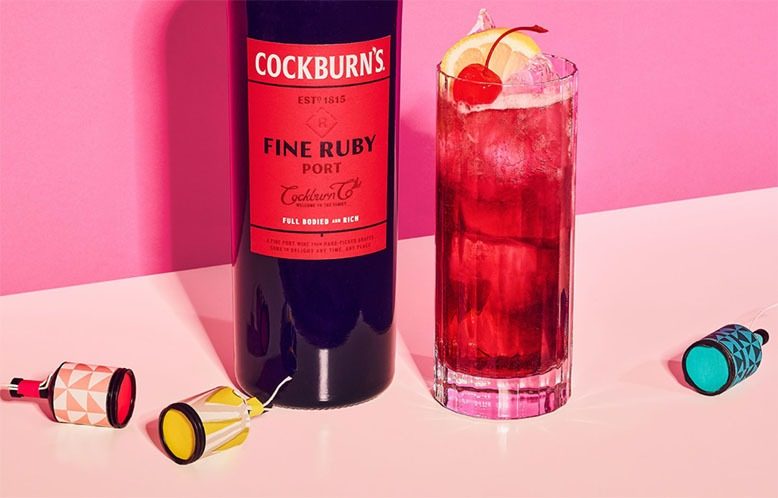
Some of the first vineyards I ever visited were in Portugal’s Douro Valley, the oldest demarcated and regulated wine region in the world, dating back more than 2,000 years. It’s a majestic place, not only for the picturesque vineyards that climb the steep hills along the Douro River, but also for its history of producing port, its famous fortified wine.
Often relegated to the dessert section of a drinks menu, port is usually thought of as a one-trick pony, rich and sweet for after-dinner sipping. Yes, the many styles—ruby, tawny, vintage, white; all generally 16–20 percent ABV—can be wonderful on their own. But as bartenders have discovered, port is also a versatile and complex cocktail ingredient.
“Port is fun to work with,” says Keith Nogay, bartender at the Archer, a cocktail bar in Jersey City. “It adds depth and richness to a drink without carrying the bitter element of an aromatized wine like vermouth or the sugar of liqueurs and amaro.”
Nogay’s intro to port as an ingredient arrived in the Chancellor, a classic made with Scotch, port, dry vermouth and orange bitters. At work at the Archer, he might reach for ruby port, the most extensively produced style, if a cocktail needs pronounced fruit notes. Oak-aged tawny ports offer more chocolate, dried fruit and nutty notes. White ports, made entirely from white grapes, feature citrus floral notes. In recent months, the bar has featured the Trade Route—a refreshing mix of aquavit, white port, lemon and pink-pepper syrup that’s shaken and served chilled. The Archer generally has at least one cocktail featuring port on its rotating menu.
As port expands its identity beyond after-dinner drinks, some producers are creating ones specifically for mixing. The craft-cocktail movement “has brought port to the attention of a younger demographic who are less familiar with the traditional after-dinner moment for a glass of port,” says Hugh Symington, marketing and communications manager for the Portugal-headquartered Symington Family Estates, which owns and runs several major port houses (Graham’s, Cockburn’s, Dow’s and Warre’s).
Earlier this year, with a younger generation in mind, Symington launched a new trio of ports. Under the Cockburn’s brand, the Tails of the Unexpected bottlings are “made for mixology,” he says. Symington, the fifth generation of a family with deep roots in port, says his favorite right now is a Port Manhattan, subbing tawny port for sweet vermouth. “It’s a fantastic alternative,” he says.
One of my favorites is port and tonic, an age-old classic in Portugal that’s incredibly easy to make. Pour 1 ounce of any type of port (I prefer white here), top with 2 ounces of tonic water, and garnish with a sprig of mint or rosemary. After a few sips, it almost feels like I’m back in the historic Douro Valley where I first encountered this ancient but ageless spirit.



